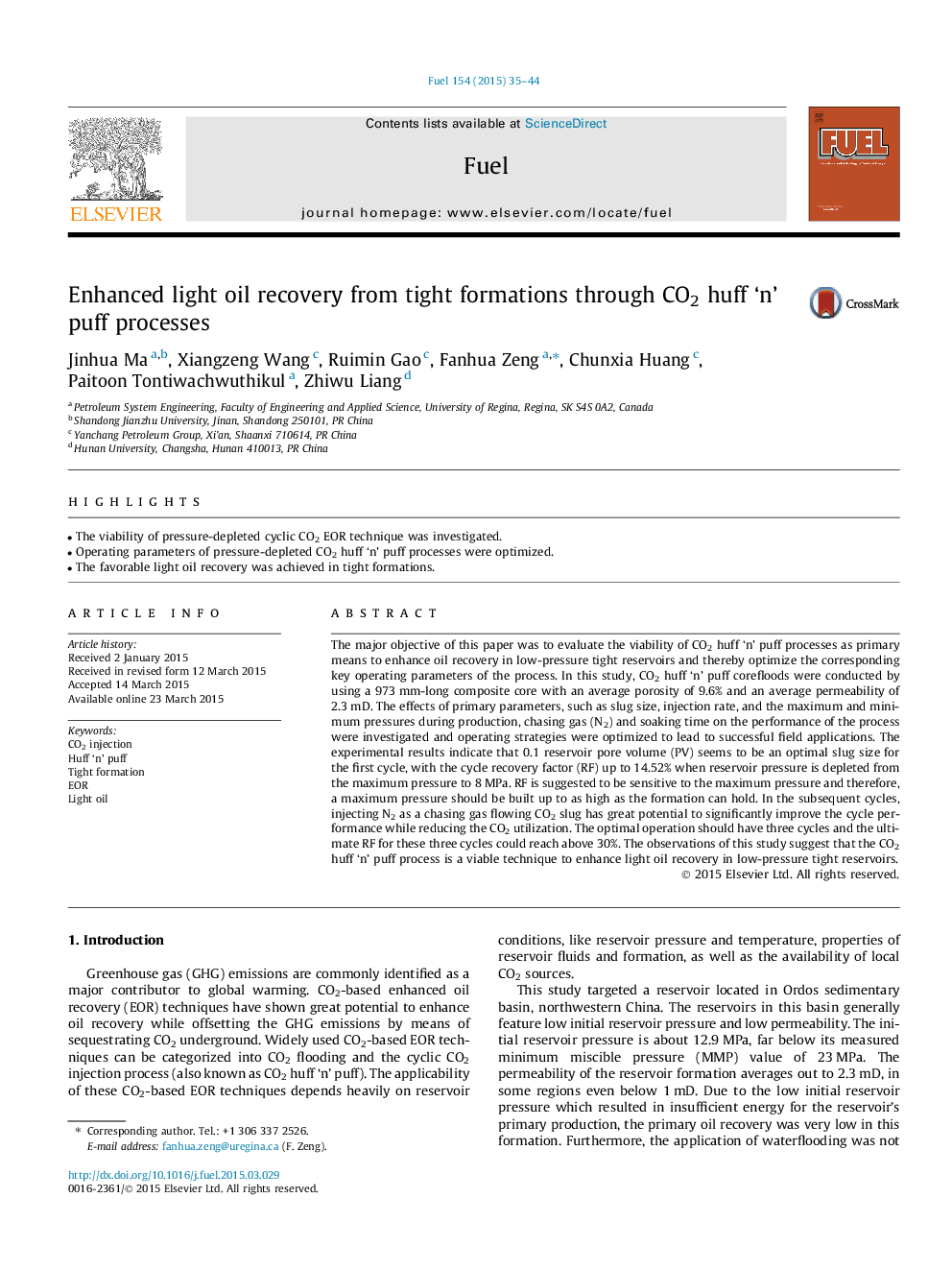| Article ID | Journal | Published Year | Pages | File Type |
|---|---|---|---|---|
| 6635385 | Fuel | 2015 | 10 Pages |
Abstract
The major objective of this paper was to evaluate the viability of CO2 huff 'n' puff processes as primary means to enhance oil recovery in low-pressure tight reservoirs and thereby optimize the corresponding key operating parameters of the process. In this study, CO2 huff 'n' puff corefloods were conducted by using a 973Â mm-long composite core with an average porosity of 9.6% and an average permeability of 2.3Â mD. The effects of primary parameters, such as slug size, injection rate, and the maximum and minimum pressures during production, chasing gas (N2) and soaking time on the performance of the process were investigated and operating strategies were optimized to lead to successful field applications. The experimental results indicate that 0.1 reservoir pore volume (PV) seems to be an optimal slug size for the first cycle, with the cycle recovery factor (RF) up to 14.52% when reservoir pressure is depleted from the maximum pressure to 8Â MPa. RF is suggested to be sensitive to the maximum pressure and therefore, a maximum pressure should be built up to as high as the formation can hold. In the subsequent cycles, injecting N2 as a chasing gas flowing CO2 slug has great potential to significantly improve the cycle performance while reducing the CO2 utilization. The optimal operation should have three cycles and the ultimate RF for these three cycles could reach above 30%. The observations of this study suggest that the CO2 huff 'n' puff process is a viable technique to enhance light oil recovery in low-pressure tight reservoirs.
Related Topics
Physical Sciences and Engineering
Chemical Engineering
Chemical Engineering (General)
Authors
Jinhua Ma, Xiangzeng Wang, Ruimin Gao, Fanhua Zeng, Chunxia Huang, Paitoon Tontiwachwuthikul, Zhiwu Liang,
